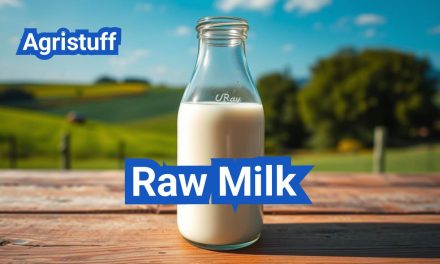Yogurt is a dairy product made by fermenting milk with a bacterial yogurt culture. This process not only creates a delicious and versatile food but also provides protein and calcium, making it a nutritious addition to a healthy diet.
With various yogurt options available, understanding the differences is crucial for making informed choices. Different types of yogurt offer unique benefits, such as enhancing healthy probiotic gut bacteria, which can contribute to overall well-being.
Key Takeaways
- Yogurt is a nutrient-rich dairy product.
- It provides protein and calcium.
- Yogurt may enhance healthy probiotic gut bacteria.
- Different types of yogurt offer unique benefits.
- Understanding yogurt options is crucial for a healthy diet.
The Origins and Evolution of Yogurt
The story of yogurt begins in the ancient past, where it is believed to have originated from the natural fermentation of milk stored in animal skins. This accidental discovery likely occurred around 5,000 years ago in the regions of Central Asia or the Middle East.
Ancient Beginnings of Fermented Milk
The transformation of milk into yogurt is attributed to the presence of wild bacteria that fermented the lactose, producing lactic acid and causing the milk to curdle. The word “yogurt” may have originated from the Turkish word “yoğurmak,” meaning to thicken or curdle.
How Yogurt Spread Across Cultures
As nomadic tribes traveled, they carried their dairy products with them, introducing yogurt to various regions. Yogurt became an integral part of different cultures, used not only as a food source but also for its medicinal properties. The spread of yogurt across the ancient world was facilitated by trade routes and cultural exchanges.
| Culture | Yogurt Variation | Usage |
|---|---|---|
| Turkish | Traditional Yogurt | Culinary, Medicinal |
| Greek | Strained Yogurt (Greek Yogurt) | Dips, Desserts |
| Indian | Dahi | Culinary, Rituals |
Modern Yogurt Production Methods
Today, yogurt production involves pasteurization, homogenization, and the addition of specific bacterial cultures to ensure consistency and quality. Modern methods have expanded the variety of yogurts available, including flavored, sweetened, and probiotic-enhanced versions.
As we explore the evolution of yogurt, it’s clear that its history is not just about a food product, but about the cultural and culinary traditions that have shaped it over millennia.
Understanding the Yogurt-Making Process

Fermentation is at the heart of transforming milk into yogurt. This process involves the action of specific bacteria that convert milk sugar (lactose) into lactic acid, thereby thickening the milk and giving yogurt its characteristic taste.
Basic Fermentation Science
The fermentation process is crucial for yogurt production. It involves adding a yogurt culture containing Lactobacillus bulgaricus and Streptococcus thermophilus to milk. These bacteria work together to ferment lactose, producing lactic acid and causing the milk to curdle.
Common Bacterial Cultures Used
The most common bacterial cultures used in yogurt production are:
- Lactobacillus bulgaricus
- Streptococcus thermophilus
These bacteria are essential for creating the unique taste and texture of yogurt.
How Temperature and Time Affect Yogurt Development
Temperature and time are critical factors in yogurt production. The ideal temperature for fermentation is between 100°F and 115°F (38°C to 46°C). The duration of fermentation can vary, but it typically ranges from 6 to 8 hours. Longer fermentation times can result in a thicker, tangier yogurt.
Understanding these elements is key to appreciating the complexity of yogurt production and the factors that influence its final texture and flavor.
Types of Yogurt: A Comprehensive Classification
With its rich history and diverse applications, yogurt is classified based on several key characteristics, including consistency, milk source, fat content, and preparation method. Understanding these classifications is essential for appreciating the versatility of yogurt and its various uses in cuisine and nutrition.
Classification by Consistency and Texture
Yogurt can be broadly categorized into strained and unstrained types based on its consistency and texture. Strained yogurt, like Greek yogurt, has a thicker consistency due to the removal of whey. Unstrained yogurt, on the other hand, retains its whey, resulting in a thinner texture.
Classification by Milk Source
The source of milk is another critical factor in yogurt classification. Yogurt can be made from the milk of cows, goats, sheep, or even buffalo. Each type of milk imparts a unique flavor and nutritional profile to the yogurt.
Classification by Fat Content
Yogurt is also categorized based on its fat content into full-fat, low-fat, and non-fat types. Full-fat yogurt is rich and creamy, while non-fat yogurt is a popular choice for those watching their calorie intake.
Classification by Preparation Method
The method of preparation significantly influences the characteristics of yogurt. Traditional yogurt is made by fermenting milk with bacterial cultures. Variations like Greek yogurt and Icelandic skyr involve straining the yogurt to remove whey, resulting in a thicker product.
| Classification Criteria | Types of Yogurt | Description |
|---|---|---|
| Consistency and Texture | Strained, Unstrained | Strained yogurt is thicker, while unstrained is thinner. |
| Milk Source | Cow, Goat, Sheep, Buffalo | Different milks offer unique flavors and nutritional profiles. |
| Fat Content | Full-Fat, Low-Fat, Non-Fat | Ranges from rich and creamy to low-calorie options. |
| Preparation Method | Traditional, Greek, Icelandic | Methods vary from simple fermentation to straining for thicker yogurts. |
Traditional Plain Yogurt Varieties

Exploring traditional plain yogurt reveals a spectrum of textures and flavors. This diversity stems from differences in production methods, particularly in how the yogurt is processed after fermentation.
Regular Unstrained Yogurt
Regular unstrained yogurt is characterized by its smooth and creamy texture. It is often preferred for its straightforward taste and versatility in both culinary and snack applications.
Set-Style vs. Stirred Yogurt
Traditional plain yogurt can be categorized into set-style and stirred yogurt based on the post-fermentation handling. Set-style yogurt is fermented in the container it is sold in, resulting in a firm texture. In contrast, stirred yogurt is fermented in large tanks and then stirred before packaging, giving it a smoother, more liquid consistency.
Differences in Texture and Taste
The texture and taste of traditional plain yogurt vary significantly between unstrained, set-style, and stirred types. The following table summarizes these differences:
| Type | Texture | Taste |
|---|---|---|
| Unstrained | Smooth, Creamy | Mild, Slightly Tangy |
| Set-Style | Firm, Gel-like | Rich, Pronounced |
| Stirred | Smooth, Fluid | Mild, Creamy |
Understanding these differences can help consumers choose the type of traditional plain yogurt that best suits their preferences and needs.
Greek and Mediterranean Yogurt Types
Mediterranean yogurts, including Greek yogurt, labneh, and suzme, offer a diverse range of textures and flavors that are both nutritious and versatile. These yogurts have gained popularity worldwide not only for their taste but also for their health benefits.
Authentic Greek Yogurt Production Method
Greek yogurt is made by straining whey from yogurt, resulting in a thicker consistency and a higher protein content compared to unstrained yogurt. This process, known as straining, removes excess liquid, concentrating the yogurt’s natural flavors and nutrients.
Nutritional Benefits: The straining process not only thickens Greek yogurt but also increases its protein content, making it a favorite among fitness enthusiasts and health-conscious individuals.
Nutritional Profile of Greek Yogurt
Greek yogurt is renowned for its high protein content and low sugar levels. A typical serving of Greek yogurt contains around 10 grams of protein, making it an excellent choice for those looking to increase their protein intake.
- High in Protein
- Rich in Probiotics
- Good Source of Calcium
Labneh, Suzme, and Other Mediterranean Varieties
Labneh and suzme are other popular types of Mediterranean yogurts. Labneh is made by straining yogurt to a creamy consistency, often served as a dip or spread. Suzme, on the other hand, is a type of strained yogurt that is popular in Turkish cuisine.
How to Use Mediterranean Yogurts in Cooking
Mediterranean yogurts like Greek yogurt, labneh, and suzme are incredibly versatile in cooking. They can be used in marinades, as a base for sauces, or as a topping for various dishes.
- Use Greek yogurt as a marinade for grilled meats.
- Add labneh to your favorite dips for a creamy texture.
- Top your breakfast with suzme for a protein-rich start.
Skyr and Icelandic-Style Yogurt

Skyr, a traditional Icelandic yogurt, has gained popularity worldwide for its thick and creamy texture. It is made using a unique production process that involves straining the yogurt to remove excess whey, resulting in a high protein content.
Traditional Skyr Production
The traditional method of making skyr involves heating milk to a high temperature, then cooling it before adding a special type of bacterial culture. The mixture is left to ferment, after which it is strained multiple times to achieve the characteristic thickness.
Nutritional Benefits of Skyr
Skyr is not only delicious but also packed with nutrients. It is high in protein, which can help with muscle repair and satiety. Additionally, skyr contains probiotics that support gut health, making it a great option for those looking to improve their digestive system.
Comparing Skyr to Greek Yogurt
While both skyr and Greek yogurt are strained yogurts with high protein content, there are some differences between them. Skyr is generally thicker and creamier, with a milder flavor compared to Greek yogurt. The straining process for skyr is more extensive, which contributes to its unique texture.
Kefir and Drinkable Yogurt Types

The world of yogurt extends beyond the traditional cup, with kefir and drinkable yogurts leading the way. These fermented dairy drinks have gained popularity globally for their unique taste and numerous health benefits.
Differences Between Kefir and Traditional Yogurt
Kefir is distinct from traditional yogurt due to its unique fermentation process, which involves a variety of beneficial bacteria and yeast. This results in a thinner consistency and a tangier taste compared to traditional yogurt. Moreover, kefir contains a broader range of probiotics, making it a popular choice for those seeking to enhance their gut health.
“Kefir is a complex probiotic drink that contains a wide variety of beneficial bacteria and yeast, making it an excellent choice for supporting gut health.”
Dr. Sarah Johnson, Nutrition Expert
Global Drinkable Yogurt Varieties
Ayran and lassi are two popular drinkable yogurt varieties enjoyed worldwide. Ayran, common in Turkish cuisine, is a refreshing drink made from yogurt, water, and salt. Lassi, originating from Indian cuisine, can be either sweet or salty and is often flavored with spices or fruits. These drinks not only offer a unique taste experience but also provide probiotic benefits.
| Drink | Origin | Description |
|---|---|---|
| Kefir | Caucasus Region | Fermented milk drink with diverse probiotics |
| Ayran | Turkey | Yogurt drink mixed with water and salt |
| Lassi | India | Sweet or salty yogurt-based drink |
Probiotic Benefits of Fermented Dairy Drinks
Fermented dairy drinks like kefir, ayran, and lassi are rich in probiotics, which can aid digestion, boost the immune system, and even support mental health. Incorporating these drinks into one’s diet can be a simple and effective way to enhance overall well-being.
By understanding the unique characteristics and benefits of kefir and other drinkable yogurts, consumers can make informed choices about their dairy intake, potentially leading to improved health outcomes.
Yogurt Varieties Based on Milk Source

Yogurt can be made from various milk sources, each imparting distinct characteristics to the final product. The diversity in milk sources allows for a wide range of yogurt types, catering to different tastes and nutritional needs.
Cow’s Milk Yogurt Characteristics
Cow’s milk yogurt is one of the most commonly consumed types worldwide. It is known for its creamy texture and mild flavor, making it a versatile ingredient in both sweet and savory dishes. Cow’s milk yogurt is a good source of protein, calcium, and probiotics, contributing to its popularity among health-conscious consumers.
Goat and Sheep Milk Yogurt Benefits
Goat and sheep milk yogurts offer unique nutritional benefits compared to cow’s milk yogurt. They are often easier to digest due to their different protein structures and higher levels of certain nutrients. Goat milk yogurt is rich in medium-chain fatty acids, while sheep milk yogurt is high in conjugated linoleic acid (CLA), both providing additional health benefits.
Buffalo and Other Animal Milk Yogurts
Buffalo milk yogurt, known for its rich and creamy texture, is another popular variety. It contains a higher fat content compared to cow’s milk yogurt, making it ideal for desserts and rich sauces. Other animal milks, such as yak or camel milk, are also used to produce yogurt, each with its unique flavor profile and nutritional characteristics.
How Milk Source Affects Flavor and Nutrition
The milk source significantly influences the flavor and nutritional content of yogurt. Factors such as fat content, protein structure, and the presence of specific nutrients vary among different milks, resulting in a diverse range of yogurt types. Understanding these differences can help consumers choose the yogurt that best suits their dietary needs and preferences.
Plant-Based and Non-Dairy Yogurt Alternatives

With growing concerns about dairy intolerance and environmental impact, non-dairy yogurts are gaining popularity. These alternatives are made from a variety of sources, including soy, nuts, oats, and rice, offering consumers a range of options.
Soy-Based Yogurt Production and Benefits
Soy-based yogurt is one of the most popular non-dairy yogurt alternatives. It is made by fermenting soy milk with live cultures. Soy yogurt is high in protein and is often fortified with calcium and vitamins, making it a nutritious option for those looking for dairy-free alternatives.
Soy yogurt benefits:
- High protein content
- Rich in isoflavones
- Often fortified with calcium and vitamins
Coconut, Almond, and Other Nut-Based Yogurts
Nut-based yogurts, such as those made from coconut, almond, and cashew, have gained popularity due to their creamy texture and versatility. Coconut yogurt, for instance, is rich in medium-chain triglycerides (MCTs), which are known for their health benefits.
Nut-based yogurts offer:
- Creamy texture without dairy
- Variety of flavors
- Potential health benefits from MCTs in coconut yogurt
Oat and Rice Yogurt Varieties
Oat and rice yogurts are other alternatives for those with dairy intolerance or preferences. These yogurts are made by fermenting oat or rice milk with live cultures. They are often hypoallergenic and easy to digest.
Comparing Nutritional Profiles of Plant-Based Options
| Type of Yogurt | Protein Content | Calcium Content | Calories |
|---|---|---|---|
| Soy Yogurt | 10g | 300mg | 150 |
| Coconut Yogurt | 5g | 200mg | 200 |
| Almond Yogurt | 1g | 450mg | 60 |
| Oat Yogurt | 2g | 350mg | 120 |
In conclusion, plant-based and non-dairy yogurt alternatives offer a diverse range of options for consumers. By understanding the different types and their nutritional profiles, individuals can make informed choices that suit their dietary needs and preferences.
How to Select Yogurt Based on Fat Content
Yogurt fat content varies widely, impacting its texture, flavor, and suitability for different culinary applications. The choice between full-fat, low-fat, and non-fat yogurt depends on nutritional needs, taste preferences, and intended use in recipes.
Full-Fat Yogurt Benefits and Uses
Full-fat yogurt is rich in calories and fat, making it more satiating and richer in flavor. It’s ideal for cooking and baking, as it adds moisture and tenderness to dishes. Chef Jacques Pépin recommends using full-fat yogurt for its rich texture and flavor in both sweet and savory dishes.
Low-Fat and Reduced-Fat Options
Low-fat and reduced-fat yogurts offer a compromise between taste and nutrition. They contain fewer calories and less fat than full-fat versions but still provide a good source of protein. These yogurts are suitable for those looking to reduce their fat intake without sacrificing too much flavor.
Non-Fat Yogurt Considerations
Non-fat yogurt is the lowest in calories and fat, making it a popular choice for dieters. However, it may contain added thickeners or sweeteners to enhance its taste and texture. It’s essential to check the ingredient list when opting for non-fat yogurt.
How Fat Content Affects Taste, Texture, and Cooking Properties
The fat content in yogurt significantly affects its taste, texture, and performance in recipes. Full-fat yogurt tends to be creamier and more flavorful, while non-fat yogurt can be more watery. In cooking, full-fat yogurt adds richness, whereas low-fat or non-fat yogurt may result in a lighter texture.
As
“The type of yogurt you choose can dramatically change the outcome of your dish,”
notes culinary expert,
Julia Child
. This highlights the importance of selecting the right yogurt based on its fat content for the desired culinary outcome.
How to Make Different Yogurt Types at Home

With just a few basic ingredients and some patience, you can start making different types of yogurt in the comfort of your own home. Making yogurt at home allows you to control the ingredients, texture, and flavor, making it a great option for those looking for a healthier or more customized dairy product.
Basic Homemade Yogurt Recipe and Equipment
To start making yogurt at home, you’ll need milk, a yogurt maker or a thermometer, and a container for incubation. You can use any type of milk you prefer, such as cow’s milk, goat’s milk, or a non-dairy alternative. The basic process involves heating the milk to a specific temperature, cooling it, adding a yogurt starter culture, and then incubating it until it thickens.
Key Equipment:
- Milk
- Yogurt maker or thermometer
- Incubation container
- Yogurt starter culture
Making Greek Yogurt at Home
Greek yogurt is known for its thick and creamy texture, achieved by straining the whey from the yogurt. To make Greek yogurt at home, you can follow the basic yogurt recipe and then strain it using a cheesecloth or a fine-mesh sieve.
Tip: For an even thicker consistency, you can strain the yogurt for a longer period or use a higher-fat milk.
Plant-Based Yogurt Preparation Techniques
Plant-based yogurts are made from non-dairy milks such as almond, soy, or coconut milk. The process is similar to traditional yogurt making, but you may need to adjust the starter culture and incubation time. Some plant-based milks may require thickeners or additional ingredients to achieve the desired consistency.
Troubleshooting Common Homemade Yogurt Problems
Common issues when making yogurt at home include inconsistent texture, off-flavors, or failure to thicken. These issues can often be resolved by adjusting the incubation temperature, ensuring the use of a fresh starter culture, or modifying the milk’s fat content.
“The art of making yogurt is not just about following a recipe, it’s about understanding the science behind fermentation and being patient enough to let the process unfold.” – Yogurt enthusiast
By following these guidelines and experimenting with different ingredients and techniques, you can create a variety of yogurt types at home that cater to your taste preferences and dietary needs.
How to Store and Maximize Yogurt Shelf Life

The shelf life of yogurt can be maximized by storing it under the right conditions. Proper storage and handling play a significant role in maintaining the quality and freshness of yogurt.
Proper Storage Temperature and Conditions
Yogurt should be stored in the refrigerator at a consistent temperature below 40°F (4°C). It’s essential to keep it away from strong-smelling foods, as yogurt can absorb odors easily. Always check the expiration date and store yogurt in its original container or an airtight container if opened.
Signs of Spoilage to Watch For
Before consuming yogurt, check for signs of spoilage. These include an off smell, slimy texture, or mold growth. If you notice any of these signs, it’s best to discard the yogurt. Trust your senses; if it looks or smells bad, it’s better to be safe than sorry.
Freezing Yogurt: Do’s and Don’ts
Freezing yogurt is a viable option for extending its shelf life. However, it’s crucial to follow the right procedures. When freezing, use airtight containers to prevent freezer burn and other flavors from affecting the yogurt. Label the containers with the date and contents.
Extending Shelf Life of Homemade Varieties
For homemade yogurt, it’s essential to follow proper sterilization and storage techniques. Store homemade yogurt in the refrigerator and consume it within a week or freeze it for longer storage. Use glass jars with tight-fitting lids for storing homemade yogurt.
| Storage Method | Shelf Life | Tips |
|---|---|---|
| Refrigeration | Up to 2 weeks | Store at a consistent refrigerator temperature below 40°F (4°C). |
| Freezing | Up to 2 months | Use airtight containers and label with date. |
| Homemade Yogurt | Up to 1 week (refrigerated) | Use glass jars with tight-fitting lids and store in the refrigerator. |
Selecting the Right Yogurt for Different Culinary Uses

Yogurt is a versatile ingredient that can be used in a multitude of ways, from cooking and baking to making smoothies and dips. Its various types offer different benefits and textures that can enhance a wide range of dishes.
Best Yogurts for Cooking and Baking
When it comes to cooking and baking, the type of yogurt you choose can significantly impact the final product. Plain, unflavored yogurt is generally the best choice as it provides moisture and tenderness without adding extra sugar or flavorings. For recipes that require a tangier flavor, Greek yogurt is an excellent option due to its strained nature, which concentrates the flavor.
Yogurts for Smoothies and Drinks
For smoothies and other cold beverages, the yogurt’s texture and flavor profile become crucial. Thick and creamy yogurts like Greek yogurt or Skyr are ideal as they provide a rich texture. For a lighter consistency, regular or drinkable yogurts can be used.
Ideal Types for Dips, Marinades, and Sauces
When making dips, marinades, or sauces, the yogurt’s consistency and flavor should complement the other ingredients. Plain yogurt is a good base, while flavored yogurts can add an extra dimension. For dips, a thicker yogurt like Greek yogurt works well, while for marinades, a thinner consistency is preferable.
Yogurt for Breakfast Applications and Snacking
For breakfast or snacking, yogurt can be enjoyed on its own or mixed with various toppings. Flavored yogurts are popular for snacking, offering a convenient and tasty option. For a healthier choice, plain, non-fat yogurt topped with fruits or nuts is a nutritious alternative.
Choosing Your Ideal Yogurt
With the numerous types of yogurt available, selecting the ideal one can be a daunting task. Choosing yogurt that suits your needs depends on personal preferences, dietary requirements, and intended use. Understanding the different types of yogurt and their unique characteristics is crucial in making an informed decision.
Whether you’re looking for a yogurt to enhance your breakfast, use in cooking, or as a base for smoothies, there’s a type that fits your needs. Consider the milk source, fat content, and preparation method when making your selection. For instance, Greek yogurt is ideal for cooking and baking due to its thick texture, while kefir is perfect for those seeking a probiotic-rich drinkable yogurt.
Your yogurt preferences may also be influenced by dietary needs, such as the desire for low-fat or non-dairy options. Plant-based yogurts, made from sources like coconut or almond milk, offer a viable alternative for those with dairy intolerance or preferences. By considering these factors, you can choose the ideal yogurt that not only tastes great but also meets your nutritional and culinary needs.
FAQ
What is the difference between Greek yogurt and regular yogurt?
Greek yogurt is strained to remove excess whey, resulting in a thicker and creamier texture, while regular yogurt is not strained, retaining more liquid.
What are the benefits of consuming probiotic yogurt?
Probiotic yogurt contains live cultures that can aid digestion, boost the immune system, and support gut health.
Can I make yogurt at home, and is it cost-effective?
Yes, making yogurt at home is simple and cost-effective, as it requires just milk and a yogurt maker or a warm environment.
What is the difference between kefir and traditional yogurt?
Kefir is a fermented dairy drink that contains a wider variety of beneficial bacteria and yeast than traditional yogurt, offering a broader range of probiotic benefits.
Are plant-based yogurts a good alternative to dairy yogurt?
Plant-based yogurts can be a great alternative for those with dairy intolerance or preferences, offering similar textures and flavors to dairy yogurt, with some brands fortified with additional nutrients.
How do I choose the right type of yogurt for cooking and baking?
For cooking and baking, it’s best to choose a yogurt that is high in protein and has a mild flavor, such as Greek yogurt or plain unflavored yogurt.
Can I freeze yogurt, and how does it affect its texture?
Yes, you can freeze yogurt, but it may change the texture, making it more icy or separated; it’s best to use frozen yogurt in smoothies or as a base for frozen treats.
What is skyr, and how does it differ from Greek yogurt?
Skyr is an Icelandic-style yogurt that is thicker and creamier than Greek yogurt, with a milder flavor, due to its unique straining process.
How do I store yogurt to maximize its shelf life?
Store yogurt in the refrigerator at a temperature below 40°F (4°C), keep it sealed, and check expiration dates to maximize its shelf life.
What are the benefits of consuming full-fat yogurt versus low-fat or non-fat yogurt?
Full-fat yogurt can provide a feeling of fullness and satisfaction, while low-fat or non-fat yogurt is lower in calories; the choice depends on individual dietary needs and preferences.
Can I use yogurt as a base for smoothies and drinks?
Yes, yogurt is a great base for smoothies and drinks, adding protein, creaminess, and flavor; you can combine it with fruits, honey, or other ingredients.
What is labneh, and how is it made?
Labneh is a type of strained yogurt that originated in the Middle East, made by straining yogurt through a cheesecloth or a fine mesh to remove excess liquid, resulting in a thick and creamy texture.
Are there any differences in the nutritional profiles of yogurts made from different milk sources?
Yes, yogurts made from different milk sources, such as cow’s, goat’s, or sheep’s milk, can have varying nutritional profiles, including differences in protein, fat, and calcium content.
Conclusion of: Types of Yogurt
Types of Yogurt: Why this guide matters
When you search for Types of Yogurt, you’ll see a dizzying mix of styles, cultures, textures, and labels; this guide organizes what really matters—how each style is made, how to use it in the kitchen, and how to read labels for protein, sugar, and live cultures—so your choices among Types of Yogurt are confident and U.S.-focused. Harvard T.H. Chan School of Public Health – Yogurt overview
What legally counts as yogurt in the U.S. (foundation for Types of Yogurt)
To compare Types of Yogurt correctly in the U.S., start with the legal standard: yogurt is cultured dairy produced with Streptococcus thermophilus and Lactobacillus delbrueckii subsp. bulgaricus; products heated after culturing must be labeled to avoid implying live cultures—knowledge that prevents mixing unlike Types of Yogurt in your analysis. eCFR — 21 CFR §131.200 (Yogurt)
Nutrition snapshot across Types of Yogurt
Nutrients vary widely across Types of Yogurt because of milk source, straining, fat level, and added ingredients; consult reliable databases to compare protein per serving, calcium, and lactose so that your chosen Types of Yogurt match your goals. USDA FoodData Central
Dietary guidance for choosing Types of Yogurt
Current U.S. guidance suggests emphasizing nutrient-dense foods and limiting added sugars; choosing plain or lightly sweetened Types of Yogurt, or fortified soy alternatives if dairy-free, helps align with national recommendations while meeting taste and nutrition targets. Dietary Guidelines for Americans, 2020–2025
Set vs. stirred: the texture basics behind Types of Yogurt
One of the most practical splits within Types of Yogurt is set (fermented in the retail cup, forming a delicate gel) versus stirred (fermented in tanks then mixed for a smooth body), distinctions that influence spoon feel, syneresis, and best culinary uses across Types of Yogurt. Tetra Pak Dairy Processing Handbook – Fermented milk products
Greek (strained) yogurt among Types of Yogurt
Greek is a concentrated, strained style within Types of Yogurt that removes whey to boost protein and thicken texture, making it ideal for savory dips, high-protein breakfasts, and heat-stable sauces compared with many unstrained Types of Yogurt. Cleveland Clinic – Greek vs. regular yogurt
Greek label checks that matter across Types of Yogurt
Because some “Greek-style” products thicken without true straining, always confirm protein per serving, added sugars, and serving size; this label discipline helps you pick higher-protein, lower-sugar Types of Yogurt aligned with your goals. FDA – The Nutrition Facts Label (including Added Sugars)
Icelandic skyr in the landscape of Types of Yogurt
Skyr is traditionally cultured and then strained to extreme thickness; while historically closer to fresh cheese, it’s used like yogurt in U.S. kitchens and discussed alongside other Types of Yogurt for its high protein and mild tartness. Encyclopaedia Britannica – Skyr
Bulgarian-style tradition inside Types of Yogurt
Bulgarian-style emphasizes the classic pair of yogurt cultures (S. thermophilus and L. d. bulgaricus) whose balance shapes acidity, flavor, and texture; knowing this helps you recognize how microbial starters differentiate Types of Yogurt. Codex Standard for Fermented Milks (CXS 243-2003)
Australian-style creaminess among Types of Yogurt
Australian-style yogurt, common in U.S. grocery cases, is typically unstrained, gently cooked for a creamy body, and sometimes stabilized, positioning it between regular and Greek within Types of Yogurt for those who prefer richness without heavy tang. Dairy Australia – Yoghurt
Probiotic claims versus “contains cultures” across Types of Yogurt
All standard Types of Yogurt begin with live starter cultures, but not all retain high counts at purchase; the industry’s voluntary “Live & Active Cultures” program and clear statements on heat-treated products help you identify truly culture-rich Types of Yogurt. International Dairy Foods Association – Live & Active Cultures
Lactose-free options within Types of Yogurt
For lactose sensitivity, lactose-free Types of Yogurt are made by adding lactase to split lactose into simpler sugars before packaging, offering similar taste and nutrition without discomfort for many consumers comparing Types of Yogurt. NIH NIDDK – Lactose Intolerance
Goat & sheep milk yogurt as alternative Types of Yogurt
Beyond cow’s milk, goat and sheep milk yogurts present different fatty acid profiles, fat globule sizes, and flavors, which some people perceive as easier on digestion; when exploring these Types of Yogurt, compare protein and fat on labels just as you would with cow-based Types of Yogurt. USDA FoodData Central (compare entries)
Drinkable and cultured beverages among Types of Yogurt
Drinkable products—yogurt drinks, ayran, kefir-like beverages—sit alongside spoonable Types of Yogurt and are recognized within fermented milk standards; their fluid nature makes them convenient for light snacks and for smoothies where other Types of Yogurt might feel too thick. Codex – Fermented milk products (CXS 243-2003)
Frozen yogurt’s place among Types of Yogurt
Frozen yogurt occupies a dessert niche within Types of Yogurt: some products retain live cultures while others do not, so look for explicit culture statements or seals if probiotics matter to you when choosing among Types of Yogurt. IDFA – Live & Active Cultures guidance
Plant-based “yogurt alternatives” in Types of Yogurt discussions
Dairy-free eaters often consider fortified soy “yogurt” alternatives when evaluating Types of Yogurt; only fortified soy versions are counted like dairy in U.S. guidance, and protein varies widely across plant bases, so verify labels to keep parity with dairy Types of Yogurt. USDA MyPlate – Dairy Group (includes fortified soy yogurt)
Match goals to the right Types of Yogurt
If your priority is more protein, pick strained Types of Yogurt like Greek or skyr; if you aim to limit added sugars, choose plain and sweeten with fruit or select flavored Types of Yogurt that keep added sugars modest while still delivering taste. Dietary Guidelines for Americans, 2020–2025
Label-reading that actually helps across Types of Yogurt
Three checks make choosing Types of Yogurt easier: protein grams per serving (higher for meals), the “Added Sugars” line (lower is better), and culture statements or seals indicating live microbes, especially helpful when differentiating heat-treated Types of Yogurt from probiotic options. FDA – Nutrition Facts Label
Kitchen uses by style across Types of Yogurt
Use stirred or plain Types of Yogurt for smoothies and dressings, Greek for tzatziki or high-protein bowls, Bulgarian for cultured tang in cold sauces, and drinkable Types of Yogurt for quick snacks or thin smoothies—matching texture to technique improves results. ThinkUSADairy – Yogurt (applications & uses)
Safety & storage guidance for all Types of Yogurt
Choose pasteurized dairy and keep cold at ≤40°F (4°C); public health agencies advise avoiding raw (unpasteurized) dairy due to pathogen risk, a point that applies even to artisanal Types of Yogurt and is especially important for pregnant people, kids, older adults, and immunocompromised individuals. CDC – Raw milk & dairy safety
Final thought
From set and stirred to Greek, skyr, drinkable, lactose-free, and plant-based alternatives, the universe of Types of Yogurt has an option for every taste and nutrition target; using standards, label literacy, and kitchen know-how, you can choose Types of Yogurt that fit your protein goals, sugar limits, and culture preferences with confidence. Harvard T.H. Chan – Yogurt
Sources & References
- eCFR — 21 CFR §131.200 (Yogurt)
- FDA – The Nutrition Facts Label
- Dietary Guidelines for Americans, 2020–2025
- USDA FoodData Central
- USDA MyPlate – Dairy Group
- Codex Standard for Fermented Milks (CXS 243-2003)
- Tetra Pak Dairy Processing Handbook – Fermented milk products
- ThinkUSADairy – Yogurt
- Harvard T.H. Chan School of Public Health – Yogurt
- CDC – Raw milk & dairy safety










